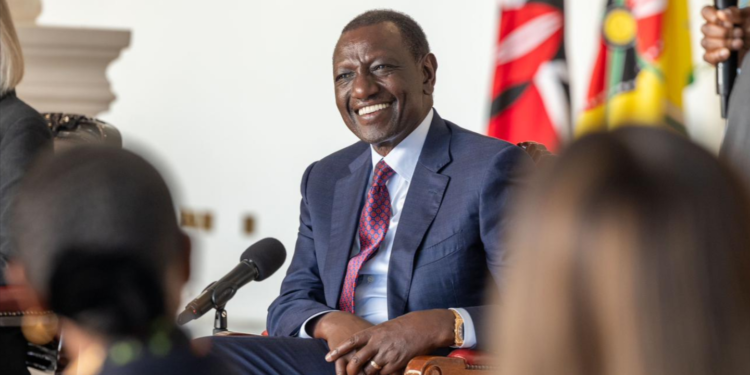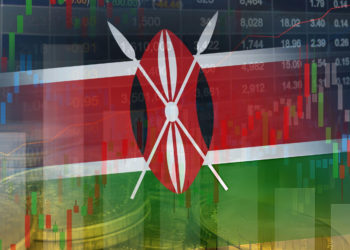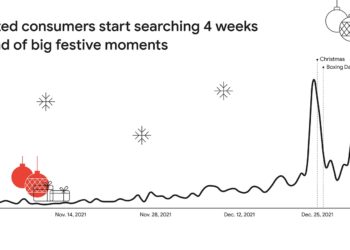The Kenyan government has taken two full pages in local daily newspapers to trumpet its accomplishments over the past two years, claiming significant strides in key sectors such as agriculture, affordable housing, the MSME (Micro, Small, and Medium Enterprises) economy, and the digital and creative economy.
The ambitious plans and the reported progress are part of the administration’s Bottom-Up Economic Transformation Agenda (BETA), a strategy it says is designed to uplift economically marginalized communities and enhance long-term economic inclusion.
Affordable Housing Push
One of the major highlights is the government’s affordable housing initiative, which aims to construct 200,000 housing units annually. The government reports that the number of affordable housing units launched and under construction has increased from 8,872 in 2022 to 103,000 in 2024, a rise of 1,061%. An additional 31,429 housing units are currently under negotiation, bringing the total number of units in various stages of development to over 134,000. The initiative targets the low-income segment of the population, focusing on providing accessible and quality housing solutions.
To achieve this, the government claims it has provided various incentives to developers, including a reduction in the Railway Development Levy from 2% to 1.5% in 2024 and a decrease in corporate tax rates from 30% to 15% for developers who construct 100 or more affordable housing units annually. It has also reduced the Import Declaration Fee (IDF) from 3.5% in 2022 to 2% in 2024.
The government’s report asserts that these measures have helped create over 188,256 jobs, representing a 1,061% increase in employment within the affordable housing sector over the past two years. It also highlights a 40% increase in mortgage refinancing, with 2,522 mortgages refinanced in 2024, up from 1,805 in 2022.
Progress in Universal Health Coverage
The government has also spotlighted its progress towards achieving Universal Health Coverage (UHC), aiming for 100% healthcare access across the nation. The report outlines several strategies, including revamping health financing and expanding health insurance schemes to cover a broader base.
According to government data, the number of County Health Products and Technologies (CHPs) increased by 269%, with 2,500 monthly shipments expected to rise to 8,000 by 2024. Furthermore, specialized facilities have been expanded, with the number of graduates from the Kenya Medical Training College (KMTC) increasing from 15,952 in 2022 to 22,695 in 2023.
Key legislation such as the Primary Health Care Act 2023 and the Digital Health Act 2023 have been enacted to support these goals. The government claims that accessibility to Level 5 and 6 healthcare services has risen by 15%, and the number of health facilities has expanded by 1.7% in 2024.
Digital Superhighway and Creative Economy
In a bid to foster a digitally-driven economy, the government has highlighted its initiatives in the digital superhighway and creative economy sectors. It reports a 5,859% increase in digitalized government services and a 652% surge in e-citizen revenue collection, rising from KES 12.6 million in 2022 to KES 94.9 million in 2024. The installation of fiber optic cables has also been ramped up, with 9,000 km of cables laid across the country, alongside the establishment of 274 digital hubs and the distribution of 6,804 digital devices.
Youth training and employment have been another focal point. The government says it has provided 652,000 young people with digital skills, a 589% increase from 2022 levels. This initiative aims to enhance employability and foster innovation within the creative economy, a sector that has experienced significant growth in recent years.
Agricultural Advancements
Agriculture, which the government identifies as a critical sector supporting 54% of household expenditures in Kenya, has also seen significant developments. As part of its strategy to reduce the cost of living and boost agricultural productivity, the government reports a reduction in the cost of farm inputs by up to 58%. For instance, the price of fertilizer has decreased from KES 6,000 per bag in 2022 to KES 2,500 in 2024, representing a 58% reduction.
Maize production has increased by 38.9%, growing from 61.4 million bags in 2022 to 85.5 million bags in 2023, driven by targeted interventions in key agricultural value chains. Livestock insurance coverage has expanded by 65.5%, increasing from 304,211 livestock in 2022 to 503,469 in 2024.
Strengthening the MSME Economy
The government has also highlighted efforts to bolster the MSME sector, which it says constitutes 85% of Kenya’s workforce. These initiatives include the refurbishment and equipping of 21 County Industrial Development Centers (CIDCs) and the launch of the Hustler Fund, which has disbursed KES 54.9 billion across various loan facilities. To date, 21.87 million Kenyans have accessed loans through the fund, with 673,340 groups and 9.3 million individual MSMEs benefiting from the scheme.


















